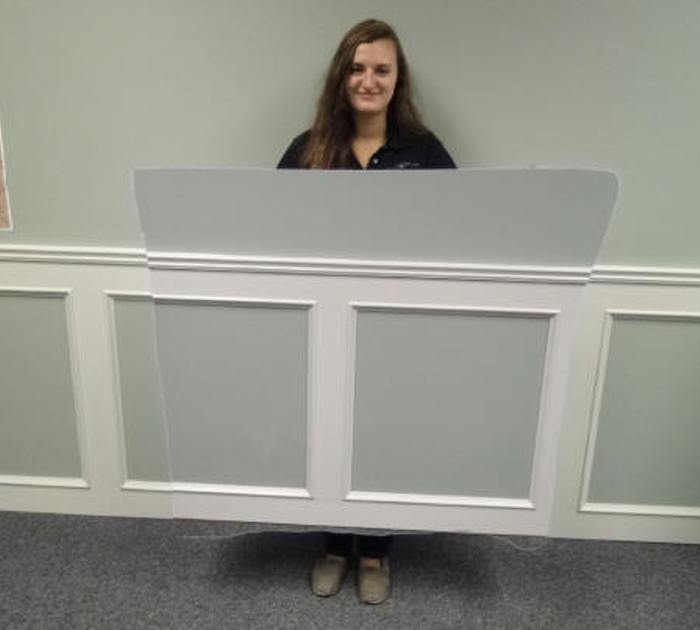UC San Diego Scientists Achieve Invisibility Cloaking Tech Breakthroughs
If you have been following this blog for some time now, you might think there’s some obsession with invisibility cloaking here. Admittedly, there have been quite a number of posts about invisibility technology featured previously. However, this recent development on the subject is too good to simply ignore.
Scientists at the University of California – San Diego have recently announced that they have achieved breakthroughs in their quest for invisibility. In the process, they have attracted the United States military’s attention. This invisibility tech is unlike the others posted on this blog earlier. Basically, it is a novel and simple geometrical approach to cloaking that makes use of the wavefronts distorted by a scatterer to emulate the reflection pattern of a flat ground plane. According to Professor Boubacar Kante of UC–San Diego, this invisibility tech is the world’s first effective “dielectric metasurface cloak.” It is a super-thin non-metal material capable of manipulating electromagnetic waves such as radio waves and visible light rays.
Just to emphasize, this super-thin non-metal material is different from the ultra-thin invisibility tech featured on this blog around a week earlier. It is bigger and is designed for bigger applications. You don’t need a microscope to observe how it makes nanoscale things disappear from sight.
The Breakthroughs
Two breakthroughs have been achieved with this new invisibility invention by UC-San Diego scientists:
- The creation of an ultra-thin invisibility material
- The use of ceramics instead of metals in the Teflon
These breakthroughs overcome the challenges encountered in developing the same invisibility tech around a decade ago. Back in 2006, researchers already learned that it is possible to absorb or redirect electromagnetic waves around an object through the use of a special coating, rendering it invisible. However, the technology back then only worked with microwaves and in two dimensions.
The new ultra-thin material created by Professor Kante and his team now makes the same invisibility tech work with visible light. This new material consists of a layer of Teflon substrate with minute ceramic cylinders embedded on it.
Additionally, this new invisibility tech overcomes the impractical size requirements of previous similar approaches to invisibility. Before, a material ten times thicker than the wavelength being dodged is necessary to successfully cloak something. Since missile guidance and marine radar wavelengths are around 3 centimeters thick, the cloaking device necessary would have to be around a foot thick. With this new tech, the cloaking material may only be around 1/10 of the wavelength being dodged. Hence, hiding from missile guidance and marine radar wavelengths will only require a cloaking material that is about three millimeters thick.
Applications
Military use is one of the most obvious applications of this technology. As mentioned, the Pentagon has already expressed interest in this technology. Drones and other aerial vehicles can make good use of this new tech. Other military vehicles that seek to dodge radar detection can also benefit from this technology. Even ground units may benefit from this cloaking invention provided that the ground and background are mostly homogenous in color and texture.
Moreover, considering how this technology efficiently redirects electromagnetic waves, it can also used in developing solar panels that can direct sunlight to a specific point instead of harvesting light from limited angles. Professor Kante, in an interview with USA Today, also said that people for the interior design industry have also expressed interest in making use of this technology.
It is worth noting, however, that Professor Kante did not specifically develop this cloaking tech to help the military. He said that his primary goal in working with metamaterials is to find a way to create materials with cavities that can trap light and store information over a long duration through methods similar to what is being employed in fiber optics. He seeks to cut slower electricity out of computers and processors.
Limitations
Unfortunately, even with the touted “breakthroughs” involved in this new invisibility tech, this is still far from the cloak Harry Potter used. It is not something that can make a person or object “inconspicuously invisible.” For one, it is still not effective across all angles. According to the Professor Kante, it only works within a six-degree range of angles. Kante and his team are working on expanding this but for now, a Harry-Potter-like type of cloak is still under the realm of fantasy. Nevertheless, the researchers believe that coming up with something with a larger range of invisibility angles is scientifically possible.

Image of the mockup demonstration of Quantum Stealth by Hyperstealth (http://www.hyperstealth.com/Quantum-Stealth/)
Availability
Professor Kante says that this tech is relatively inexpensive and can already be made into something useful. There are no fundamental roadblocks expected. Besides, ceramics are cheap and abundant. Interested parties could fast-track the further development of this technology and use it on various commercializable items, from electronics to toys and home decor. The US Military, with serious funding, may also accelerated the development of this technology to come up with something more practical and effective for deployment.
